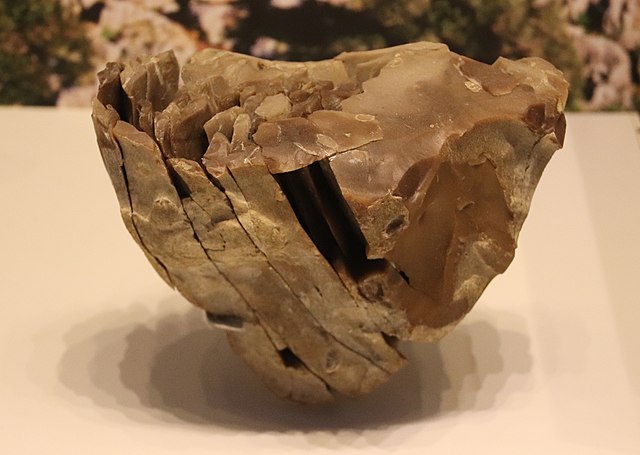The Levallois technique is a name given by archaeologists to a distinctive type of stone knapping developed around 250,000 to 300,000 years ago during the Middle Palaeolithic period. It is part of the Mousterian stone tool industry, and was used by the Neanderthals in Europe and by modern humans in other regions such as the Levant.
Production of points & spearheads from a flint stone core, Levallois technique, Mousterian culture, Tabun Cave, Israel, 250,000–50,000 BP. Israel Museum
The Prepared-core technique starts by shaping a flint stone core for making blades (reassembled from blades for illustration purposes), Boqer Tachtit, Negev, Israel, circa 40000 BP.
Levallois point – Beuzeville
The Mousterian is an archaeological industry of stone tools, associated primarily with the Neanderthals in Europe, and to the earliest anatomically modern humans in North Africa and West Asia. The Mousterian largely defines the latter part of the Middle Paleolithic, the middle of the West Eurasian Old Stone Age. It lasted roughly from 160,000 to 40,000 BP. If its predecessor, known as Levallois or Levallois-Mousterian, is included, the range is extended to as early as c. 300,000–200,000 BP. The main following period is the Aurignacian of Homo sapiens.
Distribution of Homo neanderthalensis, and main sites. Mousterian industries have been found outside this range (e.g., Jordan, Saudi Arabia)
Le Moustier 1 Neanderthal skull, today in the Neues Museum, Berlin.
Mousterian point
Production of points & spearheads from a flint stone core, Levallois technique, Mousterian culture, Tabun Cave, Israel, 250,000–50,000 BP. Israel Museum






